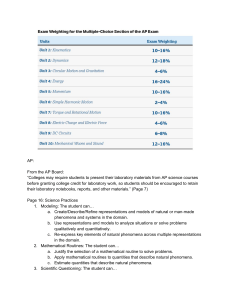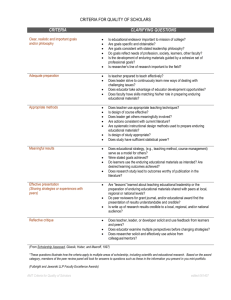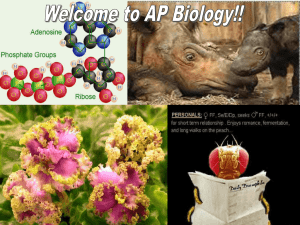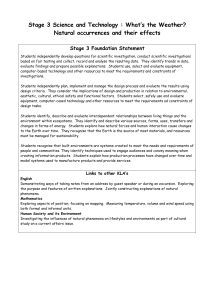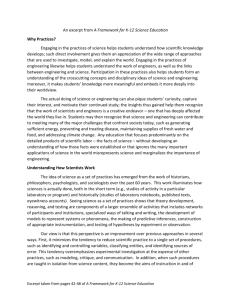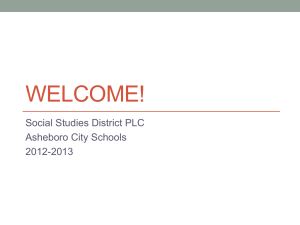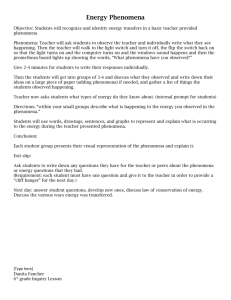Implementation Recommendations
advertisement
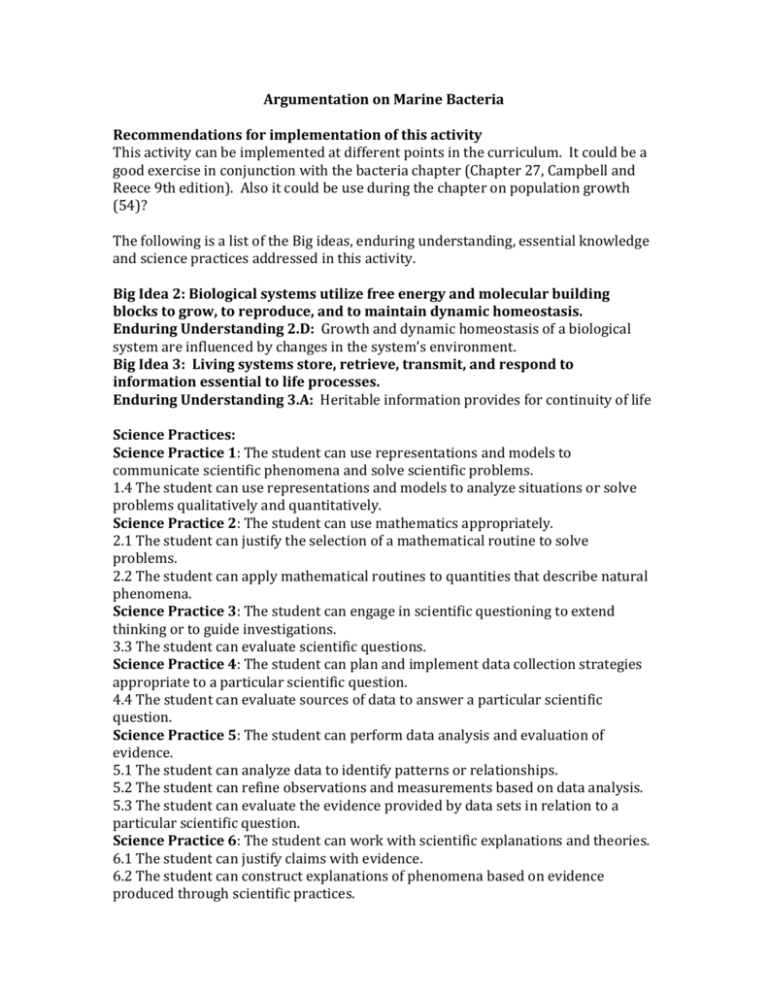
Argumentation on Marine Bacteria Recommendations for implementation of this activity This activity can be implemented at different points in the curriculum. It could be a good exercise in conjunction with the bacteria chapter (Chapter 27, Campbell and Reece 9th edition). Also it could be use during the chapter on population growth (54)? The following is a list of the Big ideas, enduring understanding, essential knowledge and science practices addressed in this activity. Big Idea 2: Biological systems utilize free energy and molecular building blocks to grow, to reproduce, and to maintain dynamic homeostasis. Enduring Understanding 2.D: Growth and dynamic homeostasis of a biological system are influenced by changes in the system’s environment. Big Idea 3: Living systems store, retrieve, transmit, and respond to information essential to life processes. Enduring Understanding 3.A: Heritable information provides for continuity of life Science Practices: Science Practice 1: The student can use representations and models to communicate scientific phenomena and solve scientific problems. 1.4 The student can use representations and models to analyze situations or solve problems qualitatively and quantitatively. Science Practice 2: The student can use mathematics appropriately. 2.1 The student can justify the selection of a mathematical routine to solve problems. 2.2 The student can apply mathematical routines to quantities that describe natural phenomena. Science Practice 3: The student can engage in scientific questioning to extend thinking or to guide investigations. 3.3 The student can evaluate scientific questions. Science Practice 4: The student can plan and implement data collection strategies appropriate to a particular scientific question. 4.4 The student can evaluate sources of data to answer a particular scientific question. Science Practice 5: The student can perform data analysis and evaluation of evidence. 5.1 The student can analyze data to identify patterns or relationships. 5.2 The student can refine observations and measurements based on data analysis. 5.3 The student can evaluate the evidence provided by data sets in relation to a particular scientific question. Science Practice 6: The student can work with scientific explanations and theories. 6.1 The student can justify claims with evidence. 6.2 The student can construct explanations of phenomena based on evidence produced through scientific practices. Science Practice 7: The student is able to connect and relate knowledge across various scales, concepts, and representations in and across domains. 7.1 The student can connect phenomena and models across spatial and temporal scales. 7.2 The student can connect concepts in and across domain(s) to generalize or extrapolate in and/or across enduring understandings and/or big ideas. References 1. Scientific argumentation in Biology 30 Classroom Activities NSTA press 2013 2. http:bit.ly/NEGAScienceHigh
